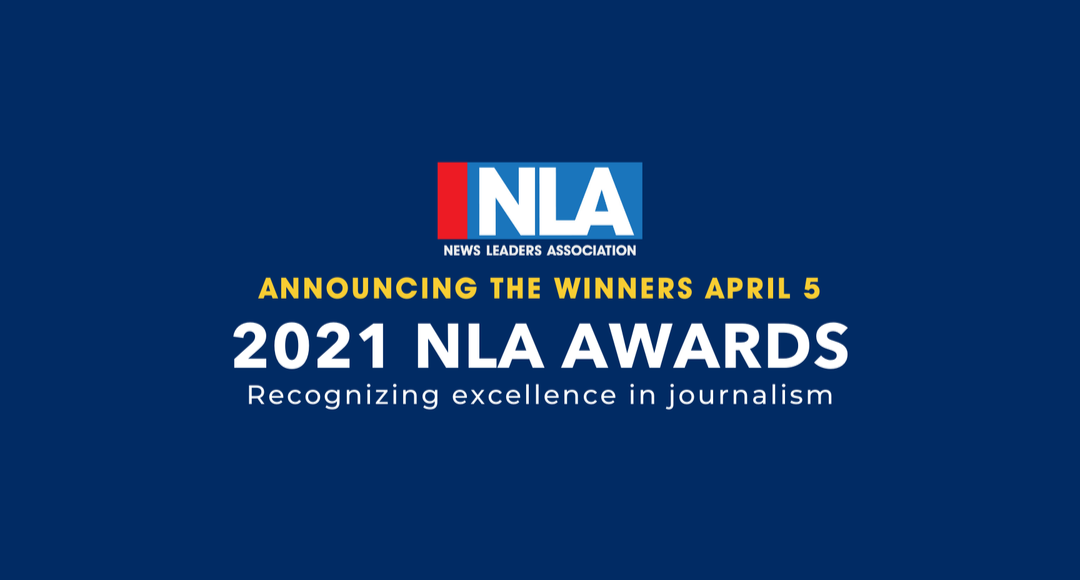
As we’ve been doing with other awards as they are released, we want to alert you to a chance to go behind-the-scenes on some of the winning work that was previously featured in Storyboard. In this case, The Washington Post was a finalist for the Dori J. Maynard Justice award with “George Floyd’s America,” a six-part series on an array of systemic societal issues connected to the death of Floyd in May 2020. Floyd died during a notorious arrest by Minneapolis police. The officer who kept his knee on Floyd’s neck for more than nine minutes is currently on trial on three counts of murder and manslaughter.
Storyboard interviewed Steven Ginsberg, the editor who directed the series, and then worked with reporter Robert Samuels to annotate one of the stories from the series about the health toll that racism takes on Black men.
The top prize for the Maynard award also went to coverage of the Floyd killing, for The New York Times project titled “I Can’t Breathe.” That was the cry Floyd repeated again and again while being pinned to the concrete by police, and that soon became a rallying cry for national demonstrations demanding a reckoning about race.
Each year, journalism awards represent a range of excellence in the field. But they also are a reflection of the times we live in. This year, you can expect many awards to recognize coverage of racial injustice and the COVID-19 pandemic. Indeed, the NLA’s prestigious Batten Award was reserved this year for pandemic coverage. You can see both issues evident in one of the NLA finalists — a ProPublica project about the disproportionate impacts of COVID on Blacks and Hispanics.
The leaning to “writerly” journalism
I hold a special place on my reading list each year for NLA’s Deborah Howell Award for Writing Excellence. This year it goes to Stephanie Clifford for “The Journalist and the Pharma Bro,” a chilling profile in Elle about a journalist who was so obsessed with understanding the motivation of a source that she crossed pretty much every ethical boundary that journalists live by.
I, too, was gripped and disturbed by Clifford’s story. It passed among professional friends, always with a lively, and often judgmental, discussion of boundaries.

Deborah Howell
But my affection for this award goes beyond a single piece to the origins of the prize. For one thing, Deborah Howell was my editor and mentor during my prime reporting years at the St. Paul Pioneer Press and remained a treasured friend until her untimely death in 2010. She loved little better than a great story, and unleashed a staff of hungry, talented reporters with a singular mission: Bring back the story as no one else could. She was not shy about chasing awards as both aspiration and motivation for her staff, and collected a few Pulitzers to show for her ambition.
But the award that now carries her name is one she honored equally to the Pulitzer. At the time, it was called the ASNE Non-deadline Writing Award — something of a blend of the Pulitzer Prize for feature writing and a National Magazine Ellie Award. In Howell’s vision, it was proof that the grunts who toiled in daily newspaper journalism could write not just with relevance, but with elegance and grace. In other words, that we could dare to do what is now called narrative.
Timeless journalism anthologies
For almost three decades, the ASNE winners were anthologized each year in “Best Newspaper Writing,” a series of 26 books published from 1980 through 2007 by The Poynter Institute. My collection has a few gaps, but the 20 or so I have hold court on the top level of my work-related bookshelf.
I have, in recent years, mustered the courage to let go of many of my outdated books, but these are keepers. And despite those yesteryear publication dates — essentially pre-digital — there is nothing outdated about the trove of inspiration and lessons they hold.
Most journalism awards these days are appropriate mash-ups of the mashed-up world we live in. Writing, photography, graphics, video, audio — we now are and should be agnostic about platform except to choose the one or ones that best tell the story we have.
But there is a lot to learn from studying stories that were purely written, or purely photographed, or purely told by voice. When I grab an edition of “Best Newspaper Writing” from my shelf to hunt for an example of how stories work, I am no longer distracted by the clothing a story is wrapped in but can see straight to the bones and blood.
